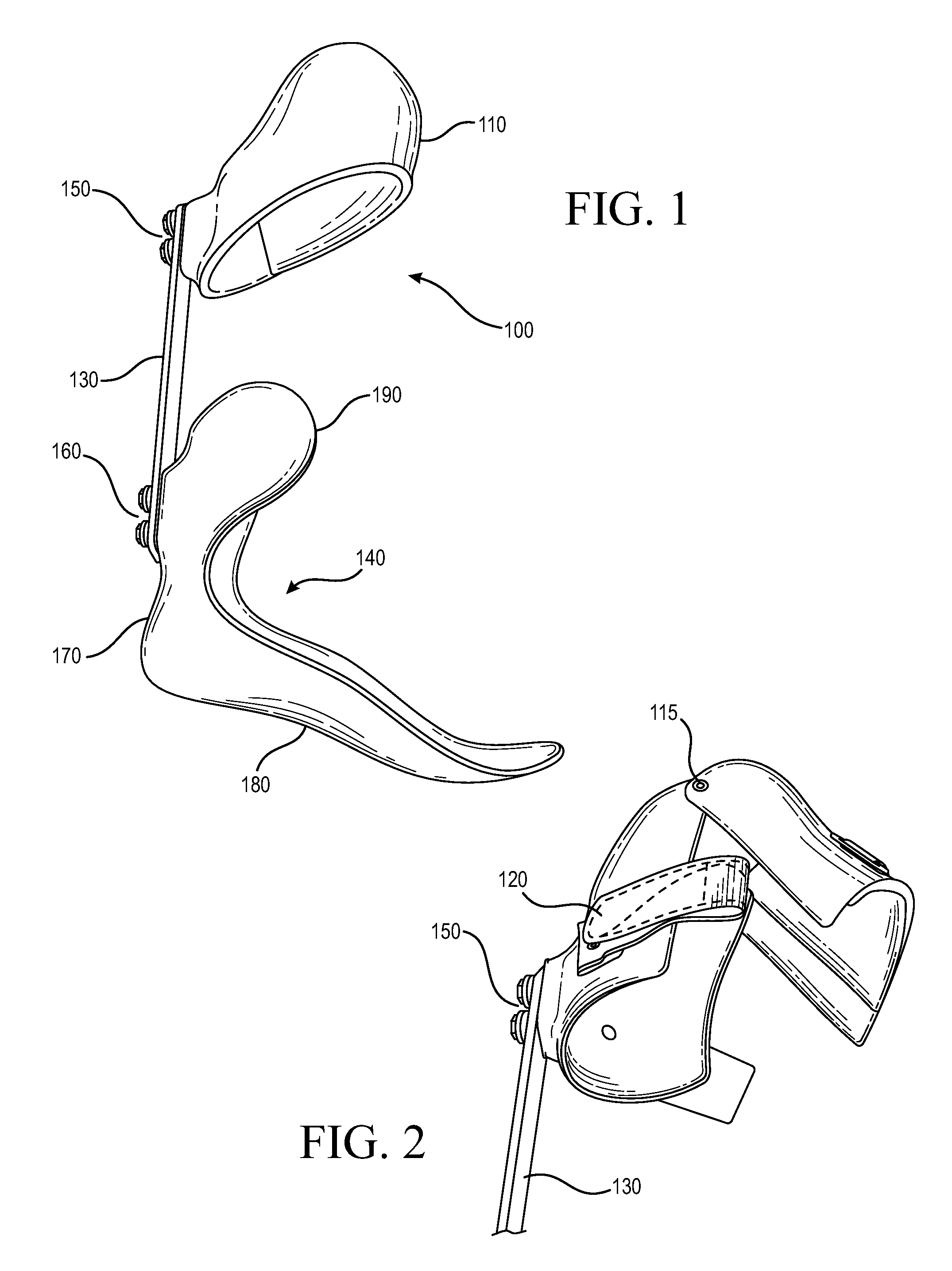Dynamic Exoskeletal Orthosis
a technology of exoskeleton and orthosis, applied in the field of dynamic exoskeleton orthosis, can solve the problems of severe limitation of the bracing options for those with pain/weakness/decreased range of motion about the ankle, and not allowing a more normal gait or higher level activities, so as to achieve greater ability to walk and run, and severe lower extremity physical impairment
- Summary
- Abstract
- Description
- Claims
- Application Information
AI Technical Summary
Benefits of technology
Problems solved by technology
Method used
Image
Examples
Embodiment Construction
[0038]The orthosis of the present invention is designed to allow walking and running for individuals or patients with severe injury to the lower limb that causes reduced ankle range of motion, weakness, and pain. The orthosis allows for a range of activities including, but not limited to, at least one of early ambulation during an early post-injury phase, agility and impact activities, running, sprinting, or deploying with a military unit.
[0039]The orthosis of the present invention is designed to compensate for weakness, pain, and / or decreased range of motion (either alone or in combination) at the ankle that result from a variety of potential diagnoses including, but not limited to, at least one of ankle fusion, talus or calcaneus fractures, tibial nerve injuries, peroneal nerve injuries, partial foot amputation (which results in ankle plantarflexion weakness), soft tissue loss in the leg (resulting in inherent weakness), or pain in the ankle during weight bearing activities.
[0040]...
PUM
 Login to View More
Login to View More Abstract
Description
Claims
Application Information
 Login to View More
Login to View More - R&D
- Intellectual Property
- Life Sciences
- Materials
- Tech Scout
- Unparalleled Data Quality
- Higher Quality Content
- 60% Fewer Hallucinations
Browse by: Latest US Patents, China's latest patents, Technical Efficacy Thesaurus, Application Domain, Technology Topic, Popular Technical Reports.
© 2025 PatSnap. All rights reserved.Legal|Privacy policy|Modern Slavery Act Transparency Statement|Sitemap|About US| Contact US: help@patsnap.com



